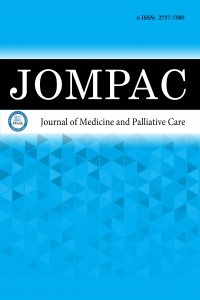1.
Ionescu VA, Gheorghe G, Bacalbasa N, Chiotoroiu AL, Diaconu C. Colorectal cancer: from risk factors to oncogenesis. Medicina. 2023;59(9):1646. doi: 10.3390/medicina59091646
2.
Ros J, Baraibar I, Saoudi N, et al. Immunotherapy for colorectal cancer with high microsatellite instability: the ongoing search for biomarkers. Cancers. 2023;15(17):4245. doi: 10.3390/cancers15174245
3.
Greco L, Rubbino F, Dal Buono A, Laghi L. Microsatellite instability and ımmune response: from microenvironment features to therapeutic actionability-lessons from colorectal cancer. Genes. 2023;14(6):1169. doi: 10.3390/genes14061169
4.
Dasanu CA, Alani M, Habibi S, Codreanu I. Immune checkpoint inhibition in advanced colorectal cancer with inherited and acquired microsatellite instability: current state and future directions. J Oncol Pharm Pract. 2023:10781552231178293. doi: 10.1177/10781552231178293
5.
Zhang L, Lu X, Xu Y, et al. Tumor-associated macrophages confer colorectal cancer 5-fluorouracil resistance by promoting MRP1 membrane translocation via an intercellular CXCL17/CXCL22-CCR4-ATF6-GRP78 axis. Cell Death Dis. 2023;14(9):582. doi: 10.1038/s41419-023-06108-0
6.
Zhu J, Lian J, Xu B, et al. Neoadjuvant immunotherapy for colorectal cancer: right regimens, right patients, right directions? Front Immunol. 2023;14:1120684. doi: 10.3389/fimmu.2023.1120684
7.
Rasilla JM. 18F-FDG PET-CT in colorectal cancer. Where are we going? Rev Esp Med Nucl Imagen Mol. 2023;42(3):137-138. doi: 10.1016/j.remnie.2023.04.006
8.
Cha J, Kim H, Shin HJ, et al. Does high [18F]FDG uptake always mean poor prognosis? Colon cancer with high-level microsatellite instability is associated with high [18F]FDG uptake on PET/CT. Eur Radiol. 2023;33(11):7450-7460. doi: 10.1007/s00330-023-09832-5
9.
Song J, Li Z, Yang L, Wei M, Yang Z, Wang X. Metabolic activity via 18F-FDG PET/CT is predictive of microsatellite instability status in colorectal cancer. BMC Cancer. 2022;22(1):808. doi: 10.1186/ s12885-022-09871-z
10.
Zhang L, Liu Y, Ding Y, et al. Predictive value of intratumoral-metabolic heterogeneity derived from 18F-FDG PET/CT in distinguishing microsatellite instability status of colorectal carcinoma. Front Oncol. 2023;13:1065744. doi: 10.3389/fonc. 2023.1065744
11.
Li J, Yang Z, Xin B, et al. Quantitative prediction of microsatellite instability in colorectal cancer with preoperative PET/CT-based radiomics. Front Oncol. 2021;11:702055. doi: 10.3389/fonc.2021.702055
12.
Kuhlman TE. Repetitive DNA regulates gene expression. Science. 2023;381(6664):1289-1290. doi: 10.1126/science.adk2055
13.
Desir AD, Ali FG. Microsatellite instability in colorectal cancer: the evolving role of immunotherapy. Dis Colon Rectum. 2023;66(10):1303-1307. doi: 10.1097/DCR.0000000000003017
14.
Mei WJ, Mi M, Qian J, Xiao N, Yuan Y, Ding PR. Clinicopathological characteristics of high microsatellite instability/mismatch repair-deficient colorectal cancer: a narrative review. Front Immunol. 2022;13:1019582. doi: 10.3389/fimmu.2022.1019582
15.
Maratt JK, Stoffel E. Identification of Lynch syndrome. Gastrointest Endosc Clin N Am. 2022;32(1):45-58. doi: 10.1016/j.giec.2021.09.002
16.
Smyrk TC, Watson P, Kaul K, Lynch HT. Tumor-infiltrating lymphocytes are a marker for microsatellite instability in colorectal carcinoma. Cancer. 2001;91(12):2417-2422.
17.
Kim ST, Cristescu R, Bass AJ, et al. Comprehensive molecular characterization of clinical responses to PD-1 inhibition in metastatic gastric cancer. Nat Med. 2018;24(9):1449-1458. doi: 10.1038/s41591-018-0101-z
18.
Nolano A, Medugno A, Trombetti S, et al. Hereditary colorectal cancer: state of the art in Lynch syndrome. Cancers. 2022;15(1):75. doi: 10.3390/cancers15010075
19.
Cortes-Ciriano I, Lee S, Park WY, Kim TM, Park PJ. A molecular portrait of microsatellite instability across multiple cancers. Nat Commun. 2017;8(1):15180. doi: 10.1038/ncomms15180
20.
Evrard C, Tachon G, Randrian V, Karayan-Tapon L, Tougeron D. Microsatellite instability: diagnosis, heterogeneity, discordance, and clinical ımpact in colorectal cancer. Cancers. 2019;11(10):1567. doi: 10.3390/cancers11101567
21.
Samstein RM, Chan TA. Dissecting microsatellite instability in colorectal cancer: one size does not fit all. Genome Med. 2017;9(1):45. doi: 10.1186/s13073-017-0438-9
22.
Kleiner S, Weber W. Importance of FDG-PET/computed tomography in colorectal cancer. Radiologe. 2019;59(9):812-819. doi: 10.1007/s00117-019-00584-2
23.
Chung HW, Lee SY, Han HS, et al. Gastric cancers with microsatellite instability exhibit high fluorodeoxyglucose uptake on positron emission tomography. Gastric Cancer. 2013;16(2):185-192. doi: 10.1007/s10120-012-0165-2
24.
Liu H, Ye Z, Yang T, et al. Predictive value of metabolic parameters derived from 18F-FDG PET/CT for microsatellite instability in patients with colorectal carcinoma. Front Immunol. 2021;12:724464. doi: 10.3389/fimmu.2021.724464
25.
Jenkins MA, Hayashi S, O’Shea AM, et al. Pathology features in Bethesda guidelines predict colorectal cancer microsatellite instability: a population-based study. Gastroenterol. 2007;133(1):48-56. doi: 10.1053/j.gastro.2007.04.044
26.
Jiang H, Zhang R, Jiang H, et al. Retrospective analysis of the prognostic value of PD-L1 expression and 18F-FDG PET/CT metabolic parameters in colorectal cancer. J Cancer. 2020;11(10):2864-2873. doi: 10.7150/jca.38689
27.
Wu J, Lv Y, Wang N, et al. The value of single-source dual-energy CT imaging for discriminating microsatellite instability from microsatellite stability human colorectal cancer. Eur Radiol. 2019;29(7):3782-3790. doi: 10.1007/s00330-019-06144-5

